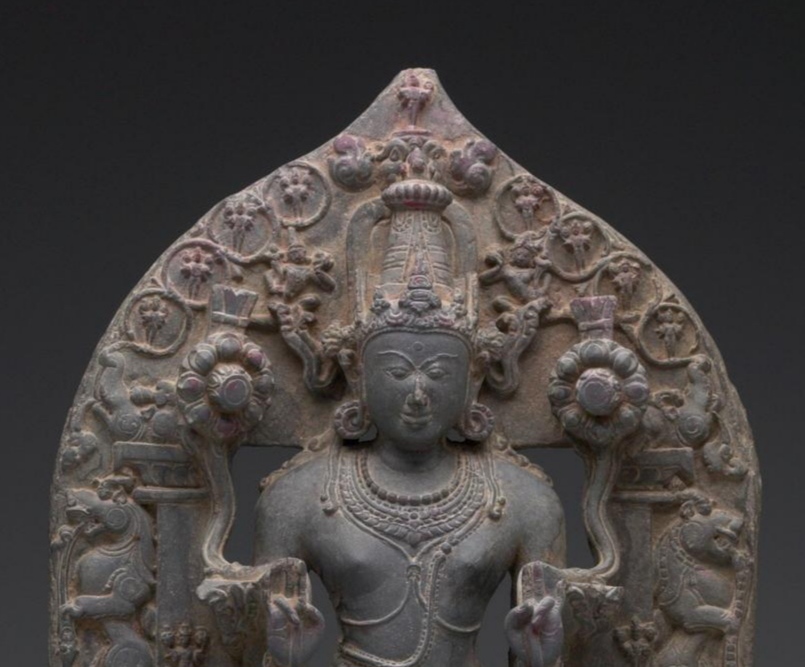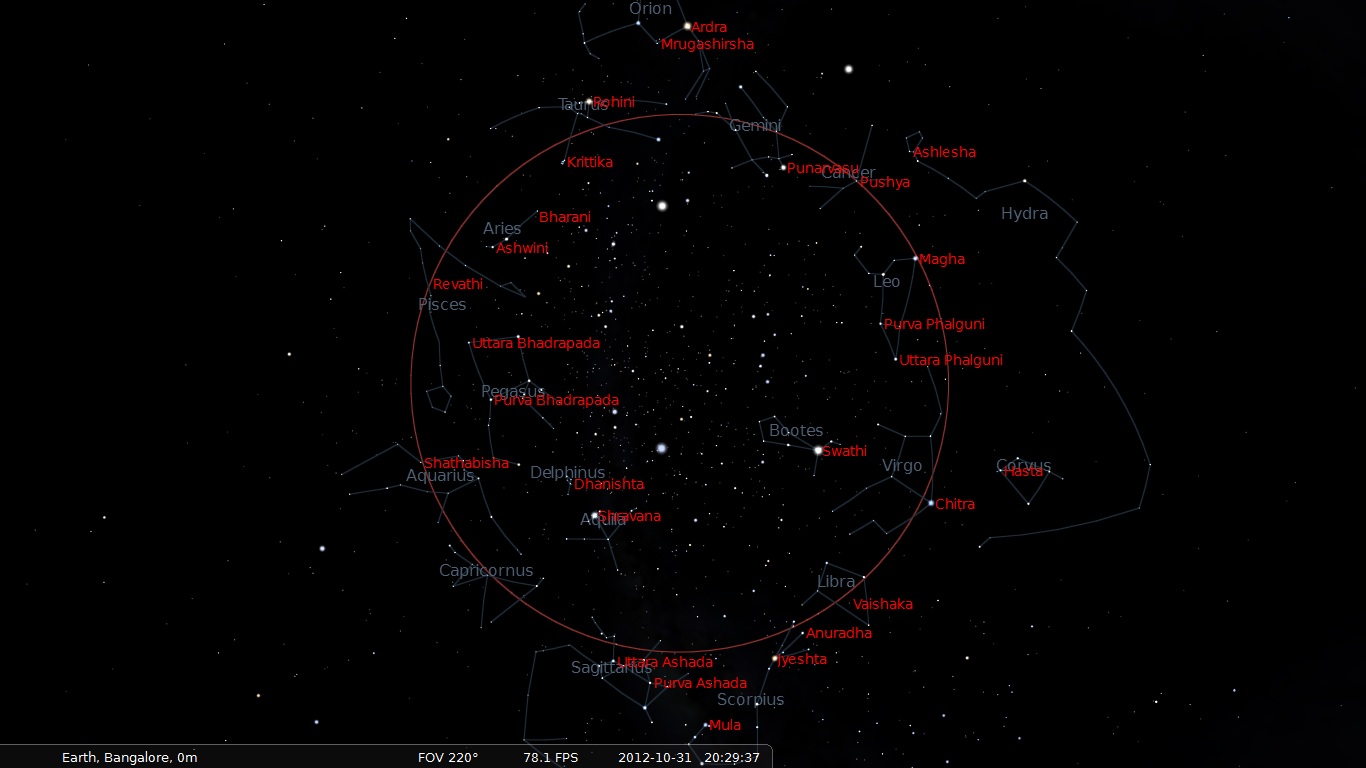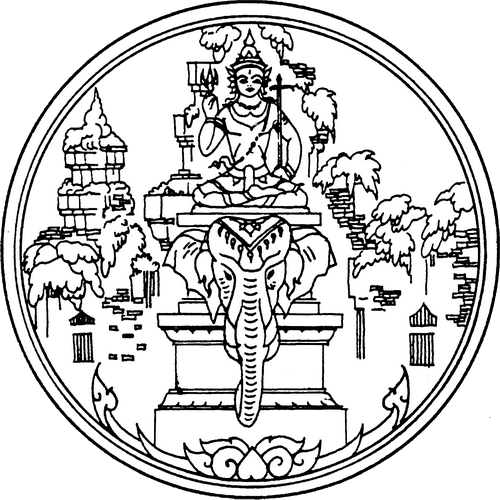|
Aryaman
Aryaman () is one of the early Vedic Hindu deities. His name signifies "Life-Partner", "Close Friend", "Sun", "Play-Fellow" or "Companion".Monier-Williams Sanskrit Dictionary He is the third son of Kashyapa and Aditi, the father and mother of the adityas, and is depicted as the mid-morning sun disc. He is the deity of the customs that rule the various Vedic tribes and people. In the Rigveda, Aryaman is described as the protector of mares and stallions, and the Milky Way (aryamṇáḥ pánthāḥ) is said to be his path. Aryaman is commonly invoked together with Mitra-Varuna, Bhaga, Bṛhaspati, and other adityas and asuras. According to Griffith, the Rigveda also suggests that Aryaman is a supreme deity alongside Mitra and Varuna. According to the Rigveda, Indra Indra (; ) is the Hindu god of weather, considered the king of the Deva (Hinduism), Devas and Svarga in Hinduism. He is associated with the sky, lightning, weather, thunder, storms, rains, river flows, and wa ... [...More Info...] [...Related Items...] OR: [Wikipedia] [Google] [Baidu] |
Aditi
Aditi (Sanskrit: अदिति, lit. 'boundless' or 'limitless' or 'innocence') is an important Vedic goddess in Hinduism. She is the personification of the sprawling infinite and vast cosmos. She is the goddess of motherhood, consciousness, unconsciousness, the past, the future, and fertility. She is the mother of the celestial deities known as the adityas, and is referred to as the mother of many deities. As celestial mother of numerous beings, the synthesis of all things, she is associated with space (''akasha'') and with mystic speech (''Vāc''). She may be seen as a feminine form of Brahma, and associated with the primal substance (''mulaprakriti'') in the Vedanta. She is mentioned more than 250 times in the ''Rigveda,'' the verses replete with her praise. Family Aditi is the daughter of Daksha and Asikni (Panchajani). The ''Puranas'', such as the ''Shiva Purana'' and the ''Bhagavata Purana'', suggest that Daksha married all of his daughters off to different people ... [...More Info...] [...Related Items...] OR: [Wikipedia] [Google] [Baidu] |
Adityas
In Hinduism, Adityas ( ) refers to a group of major solar deities, who are the offspring of the goddess Aditi. The name ''Aditya'', in the singular, is taken to refer to the sun god Surya. Generally, Adityas are twelve in number and consist of Vivasvan (Surya), Aryaman, Tvashtr, Savitr, Bhaga, Dhatr, Mitra, Varuna, Amsha, Pushan, Indra and Vishnu (in the form of Vamana). They appear in the ''Rig Veda'', where they are 6–8 in number, all male. The number increases to 12 in the ''Brahmanas''. The Mahabharata and the ''Puranas'' mention the sage Kashyapa as their father. In each month of the year a different Aditya is said to shine. Sun worship Characterisation The Aditya have been described in the Rig Veda as bright and pure as streams of water, free from all guile and falsehood, blameless, perfect. This class of deities has been seen as upholding the movables and immovable Dharma. Adityas are beneficent gods who act as protectors of all beings, who are pr ... [...More Info...] [...Related Items...] OR: [Wikipedia] [Google] [Baidu] |
Airyaman
In the Avesta, () is both an Avestan language common noun and the proper name of a Zoroastrian divinity. The common noun is a theological and social term literally meaning "member of (the) community or tribe." In a secondary development, the common noun became the proper name of a divinity Airyaman, who is the '' yazata'' of health and healing. /sup> In Zoroastrian tradition, Avestan Airyaman is Middle Persian ''Erman'' (''Ērmān''). In scripture In the Gathas The divinity Airyaman does not appear in the Gathas, the oldest texts of Zoroastrianism and considered to have been composed by Zoroaster himself. In the few instances where the term does appear (''Yasna'' 32.1, 33.3, 33.4, 49.7), ''airyaman'' is a common noun denoting the social division of priests.. In the Younger Avesta According to a cosmogonical story preserved in the ''Vendidad'', not long after Ahura Mazda had created the world, Angra Mainyu unleashed innumerable sicknesses upon it. In response, Ahura Mazda re ... [...More Info...] [...Related Items...] OR: [Wikipedia] [Google] [Baidu] |
Uttara Phalgunī
Nakshatra () is the term for Lunar mansion in Hindu astrology and Buddhist astrology. A nakshatra is one of 27 (sometimes also 28) sectors along the ecliptic. Their names are related to a prominent star or asterisms in or near the respective sectors. In essence (in Western astronomical terms), a nakshatra simply is a constellation. Every nakshatra is divided into four ''padas'' ( "steps"). The starting point for the nakshatras according to the ''Vedas'' is "Krittika" (it has been argued, because the Pleiades may have started the year at the time the ''Vedas'' were compiled, presumably at the vernal equinox), but, in more recent compilations, the start of the nakshatras list is the point on the ecliptic directly opposite the star Spica, called ''Chitrā'' in Sanskrit. This translates to Ashwinī, a part of the modern constellation of Aries. These compilations, therefore, may have been compiled during the centuries when the sun was passing through Aries at the time of the verna ... [...More Info...] [...Related Items...] OR: [Wikipedia] [Google] [Baidu] |
Bhaga
Bhaga (), is the Vedic god of wealth, as well as a term for "lord, patron" and "wealth, prosperity". He is an Āditya, a group of societal deities who are the sons of Aditi. Bhaga's responsibility was to make sure that people received a share of the goods in life. He is associated with his brother, Aryaman, regarding the expectation of a successful marriage. Etymology The cognate term in Avestan and Old Persian is ', of uncertain meaning but used in a sense in which "lord, patron, sharer/distributor of good fortune" might also apply. The cognate in Slavic languages is the root bogъ ("god"). The semantics is similar to English ''lord'' (from '' hlaford'' "bread-warden"), the idea being that it is part of the function of a chieftain or leader to distribute riches or spoils among his followers. The name of the city of Baghdad derives from Middle Persian ''bag-dād'', "lord-given". Role In Sanskrit religious literature In the Rigveda Samhita, Bhaga is invoked ... [...More Info...] [...Related Items...] OR: [Wikipedia] [Google] [Baidu] |
Hindu Gods
Hindu deities are the gods and goddesses in Hinduism. Deities in Hinduism are as diverse as its traditions, and a Hindu can choose to be polytheistic, pantheistic, monotheistic, monistic, even agnostic, atheistic, or humanist.Julius J. Lipner (2009), Hindus: Their Religious Beliefs and Practices, 2nd edition, Routledge, , p. 8; Quote: "(...) one need not be religious in the minimal sense described to be accepted as a Hindu by Hindus, or describe oneself perfectly validly as Hindu. One may be polytheistic or monotheistic, monistic or pantheistic, even an agnostic, humanist or atheist, and still be considered a Hindu." The terms and epithets for deities within the diverse traditions of Hinduism vary, and include Deva (Hinduism), Deva, Devi, Ishvara, Ishvari, Bhagavan, Bhagavān and Bhagavathi, Bhagavati. The deities of Hinduism have evolved from the Vedic era (2nd millennium BCE) through the medieval era (1st millennium CE), regionally within Nepal, Pakistan, India and in Sout ... [...More Info...] [...Related Items...] OR: [Wikipedia] [Google] [Baidu] |
List Of Solar Deities
A solar deity is a god or goddess who represents the Sun, or an aspect of it, usually by its perceived power and strength. Solar deities and Sun worship can be found throughout most of recorded history in various forms. The following is a list of solar deities: African Bakongo mythology * Nzambi Mpungu, Kongo god of the Sun and creation Bantu mythology * Nyambe, the Bantu god of the Sun and creation Berber/Amazigh mythology * Magec, Tenerife goddess of the Sun and light Igbo mythology * Anyanwu, Igbo god believed to dwell in the Sun Dahomey mythology * Mawu, Dahomey goddess associated with the Sun and the Moon Egyptian mythology * Amun, creator deity sometimes identified as a Sun god * Aten, god of the Sun, the visible disc of the Sun * Atum, the "finisher of the world" who represents the Sun as it sets * Bast, cat goddess associated with the Sun * Hathor, mother of Horus and Ra and goddess of the Sun * Horus, god of the sky whose right eye was consid ... [...More Info...] [...Related Items...] OR: [Wikipedia] [Google] [Baidu] |
Deva (Hinduism)
''Deva'' (, ) means 'shiny', 'exalted', 'heavenly being', 'divine being', 'anything of excellence', and is also one of the Sanskrit terms used to indicate a deity in Hinduism.Monier Monier-Williams, A Sanskrit-English Dictionary” Etymologically and Philologically Arranged to cognate Indo-European Languages, Motilal Banarsidass, page 492 ''Deva'' is a masculine term; the feminine equivalent is ''Devi (Hinduism), Devi''. The word is a cognate with Latin ''deus'' ('god') and Greek Zeus. In the earliest Vedic literature, all supernatural beings are called ''Devas''George Williams (2008), A Handbook of Hindu Mythology, Oxford University Press, , pages 90, 112 and ''Asuras''. The concepts and legends evolved in Indian literature#In archaic Indian languages, ancient Indian literature, and by the late Vedic period, benevolent supernatural beings are referred to as ''Deva-Asuras''. In post-Vedic Hindu texts, such as the Puranas and the Itihasas of Hinduism, the ''Devas'' represent the g ... [...More Info...] [...Related Items...] OR: [Wikipedia] [Google] [Baidu] |
Hindu Deities
Hindu deities are the gods and goddesses in Hinduism. Deities in Hinduism are as diverse as its traditions, and a Hindu can choose to be polytheistic, pantheistic, monotheistic, monistic, even agnostic, atheistic, or humanist. Julius J. Lipner (2009), Hindus: Their Religious Beliefs and Practices, 2nd edition, Routledge, , p. 8; Quote: "(...) one need not be religious in the minimal sense described to be accepted as a Hindu by Hindus, or describe oneself perfectly validly as Hindu. One may be polytheistic or monotheistic, monistic or pantheistic, even an agnostic, humanist or atheist, and still be considered a Hindu." The terms and epithets for deities within the diverse traditions of Hinduism vary, and include Deva, Devi, Ishvara, Ishvari, Bhagavān and Bhagavati. The deities of Hinduism have evolved from the Vedic era (2nd millennium BCE) through the medieval era (1st millennium CE), regionally within Nepal, Pakistan, India and in Southeast Asia, and across Hinduism ... [...More Info...] [...Related Items...] OR: [Wikipedia] [Google] [Baidu] |
Indra
Indra (; ) is the Hindu god of weather, considered the king of the Deva (Hinduism), Devas and Svarga in Hinduism. He is associated with the sky, lightning, weather, thunder, storms, rains, river flows, and war. [3 volumes] Indra is the most frequently mentioned deity in the ''Rigveda''. He is celebrated for his powers based on his status as a god of order, and as the one who killed the great evil, an Asura (Hinduism), asura named Vritra, who obstructed human prosperity and happiness. Indra destroys Vritra and his "deceiving forces", and thereby brings rain and sunshine as the saviour of mankind. Indra's significance diminishes in the post-Vedic Indian literature, but he still plays an important role in various mythological events. He is depicted as a powerful hero. According to the ''Vishnu Purana'', Indra is the title borne by the king of the gods, which changes every Manvantara – a cyclic period of time in Hindu cosmology. Each Manvantara has its own Indra and the In ... [...More Info...] [...Related Items...] OR: [Wikipedia] [Google] [Baidu] |
Ayyappa
Ayyappan, also known as Dharmasastha and Manikandan, is the Hindu deity of truth and righteousness. According to Hindu theology, he is described as the son of Shiva and Mohini (the female avatar of Vishnu), thus representing a bridge between Shaivism and Vaishnavism. Ayyappan is a warrior deity and is revered for his ascetic devotion to Dharma, the ethical and right way of living. He is usually depicted as a youthful man riding or near a Bengal tiger and holding a bow and arrow. In some representations, he is seen holding a sword and riding an Indian elephant or a horse. Other iconography generally shows him in a yogic posture wearing a bell around his neck. The legend and mythology of Ayyappan varies across regions, reflecting a tradition that evolved over time. According to Malayalam lore, Ayyappan is presented as a warrior prince of Pandala kingdom. In the later years, the stories of Ayyappan expanded with various versions describing him as a warrior who protected people f ... [...More Info...] [...Related Items...] OR: [Wikipedia] [Google] [Baidu] |






